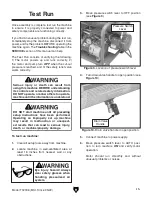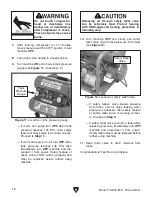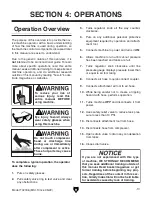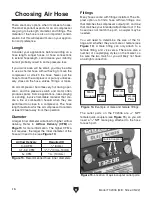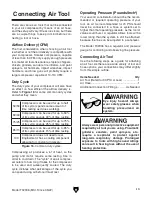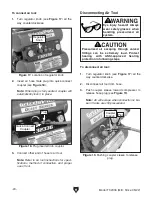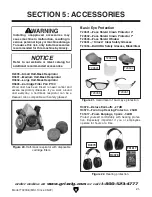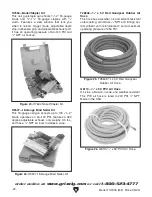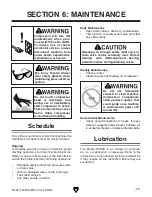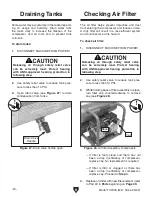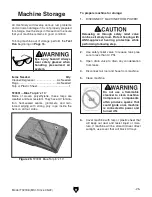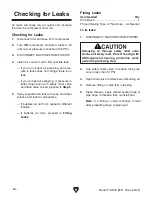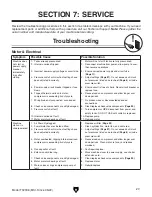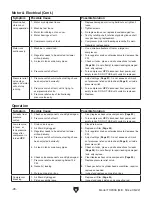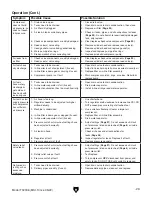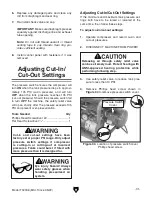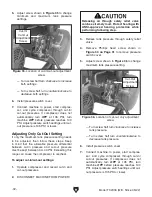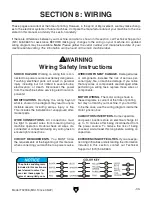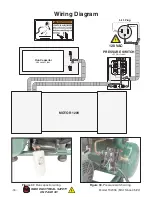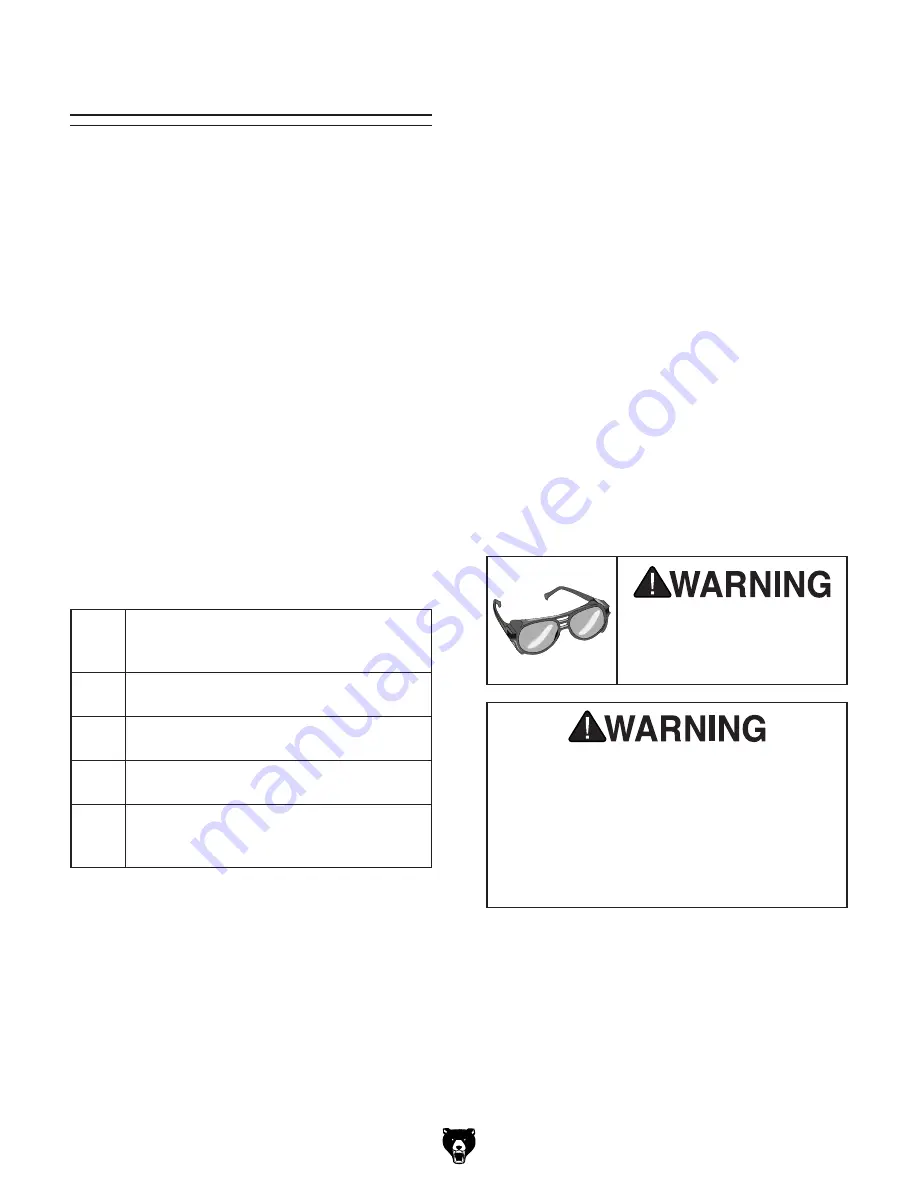
Model T32336 (Mfd. Since 05/22)
-19-
Connecting Air Tool
There are various air tools that can be connected
to your air compressor by means of an air hose,
and the setup will vary little across tools, but there
are a couple things to keep in mind before con-
necting a tool or hose.
Figure 16. Common duty cycles.
50/50
Compressor can be used for up to half
of its cycle (spends same amount of
time resting as it does working).
60/40 Compressor can be used for up to 60%
of its cycle; spends 40% of time resting.
75/25 Compressor can be used for up to 75%
of its cycle; spends 25% of time resting.
85/15 Compressor can be used for up to 85%
of its cycle; spends 15% of time resting.
100
Compressor does not need to rest.
Engine/motor has a cooling component
allowing for constant air delivery.
Compressing air produces a lot of heat, so the
pump and motor require some resting time in
order to cool down. The "cycle" of an air compres-
sor refers to how long it takes for the compressor
to be used and subsequently cooled. The duty
cycle dictates what percentage of the cycle you
can spend using air before it must rest.
Airflow Delivery (CFM)
The first consideration when choosing an air tool
is whether or not the air delivery is compatible with
your compressor. Smaller compressors, capable
of less than 5 CFM, only supply enough pressure
for smaller air tools like nailers, staplers, chippers,
chisels, grinders, sanders, tire inflators, and paint
sprayers. Air hammers, impact wrenches, impact
hammers, and blow guns will probably require a
larger compressor capable of 10-110 CFM.
Duty Cycle
The duty cycle of your compressor will also have
an effect on how efficient the airflow delivery is.
Refer to
Figure 16 for some common duty cycles
and what they mean.
Your second consideration should be the recom-
mended or required operating pressure of your
tool. An air tool recommended for 70 PSI should
never be connected to a hose or system set to
higher than that operating pressure, as the tool or
valves could burst. A regulator allows tools with a
lower rating than the system to still be attached,
because the line can be adjusted to a safe level.
The Model T32336 has a regulator and pressure
gauge for controlling and observing line pressure.
Operating Pressure (Pounds/Inch
2
)
Connecting Air Tool
Use the following steps as a guide for attaching
an air tool. As there are a wide variety of tool and
hose options, your connections may differ slightly
from this simple outline.
Items Needed
Qty
Air Tool (Rated for 90 PSI or Less) ................... 1
Air Hose ............................................................. 1
Additional Connection Fittings ........... As Needed
Eye injury hazard! Always
wear safety glasses when
handling pressurized air
system.
Always wear personal protective equipment
required by air tool you are using. Pneumatic
grinders, sanders, paint sprayers, etc.,
require a respirator to protect against
long-term respiratory damage. Prolonged
exposure to tools with high sound ratings
can result in hearing loss without the use of
hearing protection.
Summary of Contents for T32336
Page 40: ......











